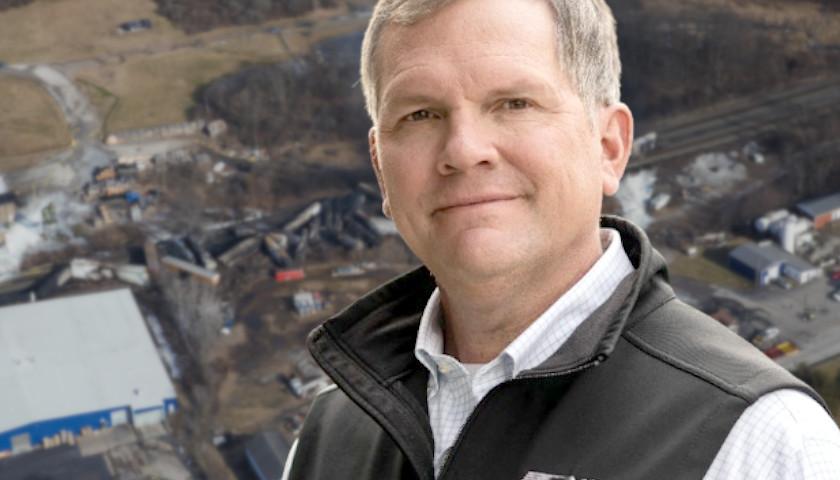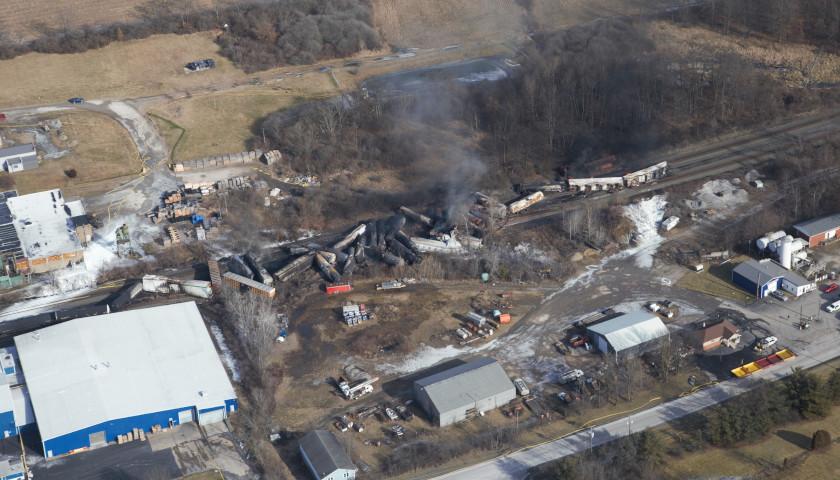Norfolk Southern CEO Alan Shaw faced questions about the decision to vent and burn vinyl chloride at a Wednesday hearing of the U.S. Senate Committee on Commerce, Science and Transportation over a month after a train carrying toxic chemicals derailed in East Palestine, Ohio.
U.S. Senator Ted Cruz (R-TX) asked Shaw if anyone in the decision-making process disagreed with the recommendation to vent and burn the vinyl chloride from all five tank cars.
“In terms of the decision to vent and burn the vinyl chloride which is what caused the massive plume of smoke and the rather extraordinary site of an American city essentially on fire among the decision makers that were engaged in that process did anyone disagree with the recommendation to vent and burn the vinyl chloride from all five tank cars,” Cruz said.
Shaw told the Senate committee that “unified command” was in alignment with the decision.
“My understanding is that unified command was aligned around that decision and that decision was based solely on the safety of that community,” Shaw said.
When asked by Cruz if Norfolk Southern was a proponent of venting and burning the vinyl chloride from all five tank cars, Shaw evaded the question.
“My goal during the entire process was to provide unified command and the incident commander with the best information that we had and at that point,” Shaw said.
In a previous U.S. Senate hearing earlier this month, Shaw did not identify the members of the unified command but that Norfolk Southern was one of them. He also confirmed that the incident commander was East Palestine Fire Chief Keith Drabick.
Shaw was not asked nor did he comment if he provided the legal authority by which the burn was authorized.
On February 3rd 50 train carriages, 10 of which were carrying hazardous materials, derailed as a result of a technical problem with a rail car axle, according to federal authorities. There was vinyl chloride in five of the vehicles. Hundreds of residents evacuated as a result of the controlled release of poisonous gasses that Norfolk Southern carried out on February 6th to stop an explosion.
Officials told East Palestine residents on February 8th that they could safely go home, despite the reports of hundreds of dead fish in the Ohio river near East Palestine and residents complaining of headaches and illness since the derailment.
Cruz went on to ask National Transportation Safety Board (NTSB) Chair Jennifer Homendy what alternatives were there to the vent and burn decision.
“What are the alternatives to venting and burning and what are the risks involved in the venting and burning procedure,” Cruz said.
According to Homendy, when it comes to disasters such as the one that occurred in East Palestine the Federal Railway Administration (FRA) had two alternatives to the vent and burn which resulted.
“Part of FRA guidance on venting and burning is to look at the alternatives. One is a controlled venting through the valves. In this case they were melted so that was not an option. You could do hot tapping which is essentially cutting a hole in the tank car and draining the liquid essentially trans-loading it into another rail car. There are risks to that. And then there is the vent and burn,” Homendy said.
Homendy was not asked nor did she comment if the hot tapping was considered as an option in the East Palestine derailment.
US. Senators JD Vance (R-OH) and Sherrod Brown (D-OH) who introduced bipartisan railroad safety legislation earlier this month appeared as witnesses, along with representatives from the Ohio Western Reserve Joint Fire District, Ohio State SMART-TD, and Association of American Railroads. Ohio Governor Mike DeWine attended the hearing virtually.
– – –
Hannah Poling is a lead reporter at The Ohio Star and The Star News Network. Follow Hannah on Twitter @HannahPoling1. Email tips to [email protected]
Photo “Alan Shaw” by Alan Shaw. Background Photo “Norfolk Southern Train Crash” by National Transportation Safety Board.





